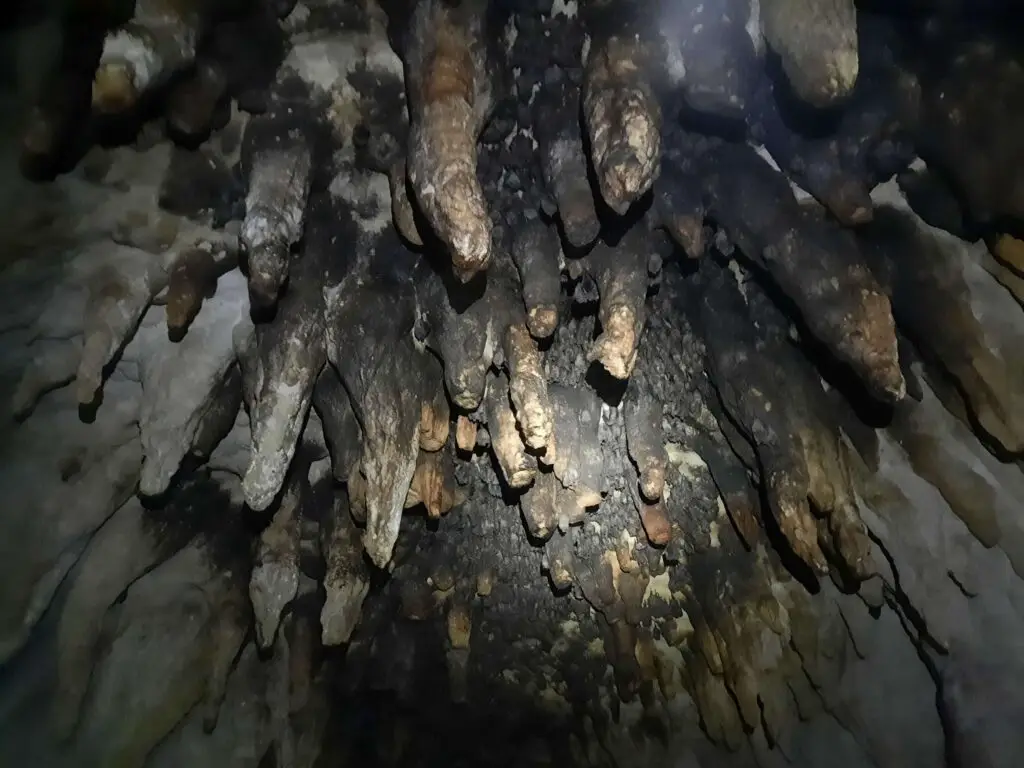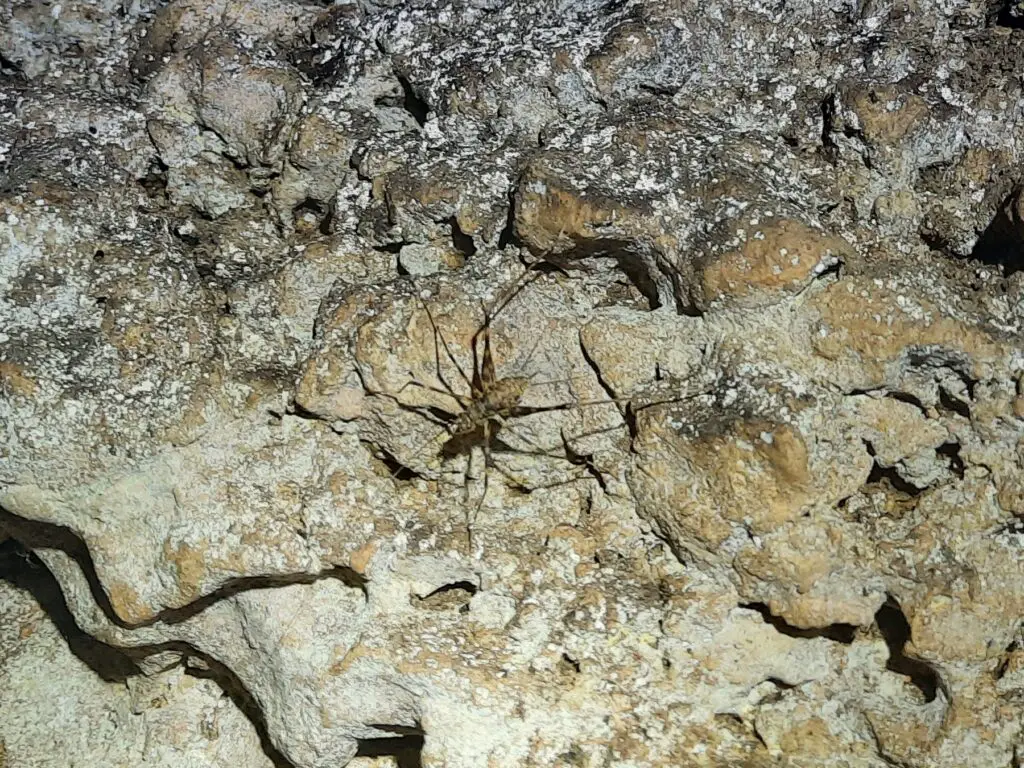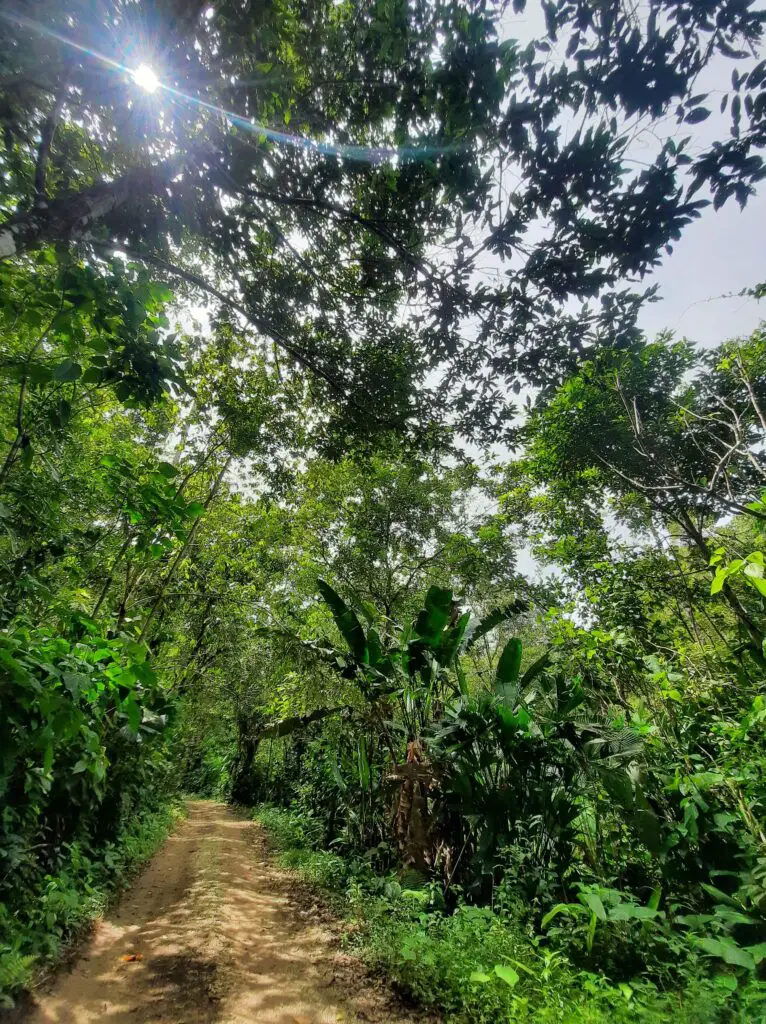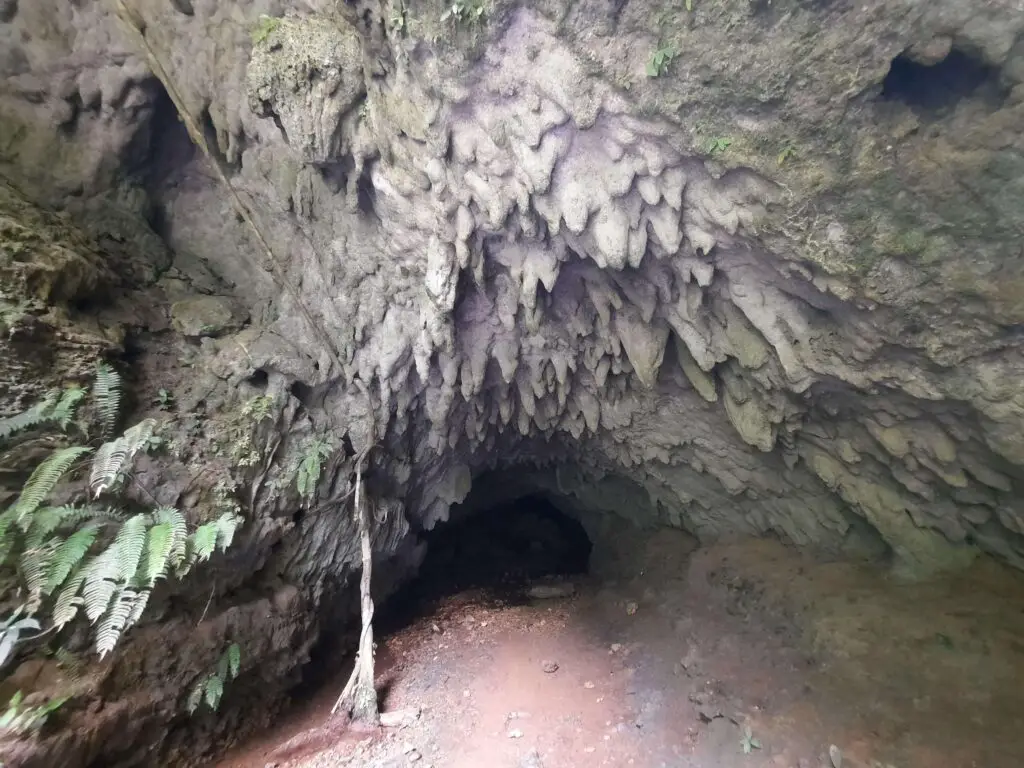The Bocas del Toro Archipelago is Panama’s most popular travel destination, thanks to the amount of beautiful white-sand beaches on the islands, but if you’re like us and prefer exploration to lazing on the beach, there are plenty of more exciting things to do in the area. One of the best things we did in the area was going caving on Isla Colón.
Wading through the two flooded cave tunnels of La Gruta with bats circling around our heads and cave crickets serenading us from the walls was a super fun adventure, but it’s still easy enough to do independently (although hiring a guide is possible, too). Read on for everything you need to know about exploring La Gruta.
This post may contain affiliate links, and I might earn a small commission at no additional cost to you. For more info, click here.
Exploring La Gruta Cave
It’s worth noting that there are two separate cave tunnels to explore at La Gruta. The first one is easier to navigate and takes maybe 5 minutes to slowly walk through. The second one is more adventurous, with deeper water and more scrambling involved. This one took us about 15 minutes to traverse.
The Approach and the First Cave
From the turn-off at the highway near the school, just follow the small trail straight ahead to the cave entrance. If you need some equipment, you can ask around at the house on the left, otherwise just descend the stairs once you reach the small open-air church.

The place is used for occasional services, and close to the cave entrance sits a statue of the Virgin Mary (called Nuestra Señora de la Gruta). To enter the cave, you’ll have to step into the little stream on the right, which flows through both caves, but gets much deeper soon.
Right away you’ll have to decide whether you want to stick to the left and scramble along the rocks or to keep right and wade through the water. I suggest you do the latter, as it will eventually become impossible to avoid the wading part anyway.
If you rented some gumboots, they’ll constantly fill up, so just pour them out once you’ve left a flooded section. You shouldn’t be too afraid of insects, by the way, as there are lots of cave crickets (with super long antennae) and we spotted some freakishly large tailless whip-scorpions – they’re not dangerous, just a bit creepy.



You’ll also meet tons of bats, especially near the exit of the first cave. When we looked up, we saw hundreds of them sleeping in between the stalactites. Apart from that, we also spotted a small turtle swimming around in the first cave.
The Second Cave and the Way Back
Once you’ve come out the other end, you can either return to the start if you’ve had your fill of darkness, bats and creepy crawlies or simply continue along the stream through the jungle until you reach the second cave.
This one is much more adventurous than the first one, and the water occasionally reached thigh-level here. The bats were also a lot more active here, and in some sections constantly flew around our heads (although they never touched us).



Finally, there are some parts, where a little more scrambling across rocks is involved, while in other sections you’ll have to crouch under the low cave ceiling. We also came across some muddy sections, where the ground did the best to keep us stuck in place, but we persevered and finally came out at the other end.
While the first cave was already fun, the second one was the highlight for us, and I highly recommend exploring both. To get back to the start, you’ll have to follow the smalls stream for a while longer, before climbing up the left bank at the first possible spot.


Once you reach the dirt-track, you’ll have to turn left and follow it for maybe ten minutes through a pretty section of rainforest. Keep your eyes peeled for parakeets in the trees – we spotted a few on our way back. Finally, you’ll come back to the open-air church near the entrance to the first cave.
Practicalities
How to Get to La Gruta Cave
The cave lies near the tiny village of Colonia Santeña in the centre of Isla Colón. The easiest way to get here, is to take the bus to Boca del Drago from Bocas Town’s Plaza Bólivar and tell them where you want to get off (you might get an incredulous look like we did, as apparently gringos usually just want to go to Starfish Beach).

Once there, the turn-off for La Gruta is at the eastern end of the village near the school. There’s a big blue sign for the cave at the highway, as well as a little wooden box where you can pay the entrance fee.
On the way back, you can either try and stop one of the overfull buses back to Bocas Town, try to hitch a ride back to town or simply walk for about 1.5 hours or so.
What Kind of Equipment Do You Need?
As parts of the cave are pitch-black, you’ll need a good flashlight, preferably a headlamp, so you’ll have your hands free for holding on to the walls in the flooded sections or the occasional scramble. I also highly recommend wearing swimwear, as the water sometimes rises up to your thighs.
Finally, you need some sturdy footwear, as you can’t go barefoot – the cave floor consists of sharp volcanic rock. Fortunately, the people living in the property on the left-hand side of the path leading from the road to the cave rent out gumboots and headlamps for a small fee.



We were happy to take them up on their offer, as we were woefully under-equipped. I also recommend leaving your bags with them, as a carrying a backpack would be super annoying in the narrow, flooded cave.
Do You Need a Guide?
With a small sense of adventure it’s easy to do independently, but if you’re unsure, you can ask the people at the property opposite the school (the ones also renting out equipment). They told us they occasionally show people around the caves.

How Much Is the Entrance Fee?
The fee is 1$ per Person, which you’ll have to throw into a small box by the highway turn-off.
How Long Does it Take?
The whole adventure took us about 40 minutes, including about 5 and 15 minutes in the two caves, respectively, plus the way back through the jungle.
See Also
How to Spend 3 Amazing Days in Bocas del Toro, Panama
Our Top 5 Favourite Beaches in Panama’s Bocas del Toro Archipelago


